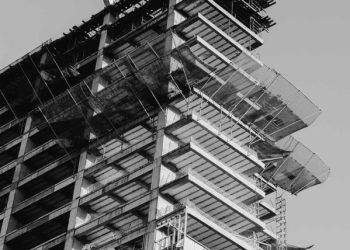The Manaslu Circuit Trek is a highly adventurous and challenging yet incredibly rewarding journey in the Himalayas of Nepal.
Situated in the Gorkha district, this trail offers breathtaking views of Mount Manaslu, the eighth highest mountain in the world.
This revered peak stands as a majestic highlight of the trek.
Although the trek to Manaslu Circuit is not as famous as the iconic Everest Base Camp Trek, Annapurna Base Camp Trek, or Langtang Valley Trek, it captivates those who seek a less crowded and more pristine trekking experience.
As a result, trekkers often have many questions about this remarkable route.
Here are some of the Frequently asked questions for Manaslu Circuit trek
What is the Manaslu Circuit Trek?
Manaslu circuit trek is a hidden gem in the Nepalese Himalayas. This off-the-beaten-path trail circles majestic Mount Manaslu, treating hikers to breathtaking mountain vistas, encounters with unique cultures, and a variety of landscapes.
The Manaslu Circuit Trek is a chance to trek through charming villages, conquer challenging mountain passes, and immerse yourself in the unspoiled beauty of the Himalayas
How Difficult is the Manaslu Circuit Trek?
The Manaslu Circuit Trek is a strenuous adventure, best suited for experienced trekkers.
If you have some trekking experience and enjoy long walks, the Manaslu Circuit trek can be a thrilling challenge.
The Manaslu circuit trek route takes you through remote areas where facilities are limited, adding to the difficulty but also the sense of adventure.
The trail features numerous ascents and descents over steep, rocky, and forested paths.
This rugged terrain demands good physical fitness and stamina.
A major challenge is dealing with high altitudes.
Altitude sickness is a risk, and acclimatizing to the thin air is crucial. Crossing the Larkya La Pass at 5,106 meters (16,752 feet) is particularly difficult, involving long hikes on snowy and icy trails.
Prior trekking experience, fitness, and endurance are essential.
It’s recommended to train in strength, endurance, and cardiovascular fitness for at least three months before starting the trek.
What is the Best Time for the Manaslu Circuit Trek?
The best times for the Manaslu Circuit Trek are during the spring (March to May) and autumn (September to November) seasons.
These periods offer the most favorable weather and stunning views, making the trek both enjoyable and safe.
The autumn season is often considered the best time for the Manaslu Circuit Trek.
During Autumn (September to November) months, the chances of rainfall are minimal, providing clear and spectacular views of the Himalayas.
The weather is generally stable, with crisp air and moderate temperatures, making the trekking conditions ideal.
The vibrant fall colors and clear skies enhance the overall trekking experience.
Spring is another excellent time for trekking in the Manaslu region.
The weather is warm, and the dense forests along the trail are covered with beautiful, colorful flowers, adding a magical touch to the landscape.
Spring season also offers clear views of the mountains, though occasional rain showers might occur towards the end of May. The pleasant weather and blooming flora make spring a popular time for trekkers.
Winter (January to February): Heavy snowfall during these months makes crossing the Larkya La Pass extremely risky. The cold temperatures and snow-covered trails add significant challenges to the trek.
Monsoon (June to August): The monsoon season brings heavy rainfall, leading to risks of floods and landslides. The trails can become slippery and dangerous, and the views are often obscured by clouds and mist.
Choosing the right time for the Manaslu Circuit Trek ensures a safer and more enjoyable experience, allowing you to fully appreciate the stunning beauty of the Himalayas.
What Type of Accommodation to Expect During the Manaslu Circuit Trek?
During the Manaslu Circuit Trek, trekkers can expect a range of accommodations that cater to different preferences and comfort levels.
The most common lodging options are tea houses and lodges, which provide basic amenities such as a bed, blanket, and pillow.
Despite their simplicity, these establishments are generally clean and offer a welcoming environment where trekkers can rest and rejuvenate themselves after a day of hiking.
In addition to tea houses and lodges, there are also clean huts and guesthouses scattered along the trail.
These types of accommodation maintain a similar standard of basic facilities but vary slightly depending on their location and size.
Most tea houses and lodges feature communal dining areas where trekkers can enjoy hearty meals, typically comprising locally sourced ingredients and offering a variety of dishes, both local and some international options.
Alternatively, camping is an option for those looking to immerse themselves fully in the wilderness experience.
Trekkers can opt for a camping trek, where all necessary arrangements, including tents, food, and cooking equipment are managed by trekking staff.
Camping allows for greater flexibility in choosing overnight stops and offers a closer connection to nature, enhancing the adventure aspect of the trek.
Can I do Manaslu Circuit trek Solo?
Solo trekking on the Manaslu Circuit Trek is not permitted. So, no you cannot trek Manaslu Circuit solo.
According to regulations, a minimum group size of two people is required, and hiring a licensed guide is mandatory for obtaining the necessary permits.
This means you cannot trek independently, you must either hire a guide or join a group organized by a certified trekking agency.
The restriction is in place to ensure safety and proper management of the trekking area.
A licensed guide not only helps navigate the trail but also provides valuable insights into the local culture and environment.
They are essential for obtaining the Manaslu Restricted Area Permit, which is required for entering the region.
Is Manaslu circuit trek a less crowded trek?
The Manaslu Circuit Trek is often preferred by those seeking a less-crowded alternative to more famous treks like Everest Base Camp and Annapurna Base Camp.
With only a few thousand trekkers annually, the Manaslu circuit trek remains a quieter route in the Himalayas.
Known as one of the untouched trails, it retains its natural beauty and rich biodiversity, making it a haven for flora and fauna enthusiasts.
Accessing the Manaslu Circuit Trek presents its challenges due to its remote location in Nepal.
The trekking trails wind through rugged terrain and pristine landscapes, offering trekkers a more authentic experience away from the hustle of more commercialized routes.
While traditionally less marketed and less visited, the Manaslu Circuit Trek has been gradually gaining popularity in recent years.
Increased recognition among adventurers has led to a gradual rise in the number of trekkers exploring this remote Himalayan gem.
Despite this growing interest, the trail still maintains its allure as a quieter and more serene trekking option compared to its more renowned counterparts.
For trekkers seeking a balance between adventure, solitude, and natural beauty, the Manaslu Circuit Trek continues to offer a captivating journey through some of Nepal’s most spectacular landscapes, away from the crowds typically found on more popular trekking routes like Everest base camp and Annapurna circuit.
What types of meals are provided during a trek?
meals provided at tea houses typically consist of a simple continental menu during Manaslu Circuit trek.
The staple dish, Dal Bhat, is a nutritious combination of rice and lentil soup accompanied by seasonal vegetables and pickles.
This hearty meal provides the necessary energy for Manaslu Circuit trekking.
Other common food items include soups, porridge, and noodles, which are filling and suitable for sustaining energy levels during the trek.
Vegetarian food options are widely available and are often sourced locally, ensuring freshness and nutritional value.
For those preferring non-vegetarian dishes, it’s advisable to consult with the guide regarding the freshness of the meat before ordering.
This ensures that the meal is safe to consume and meets dietary preferences.
Overall, the meals served during treks are designed to be wholesome, nourishing, and conducive to trekking activities.
They provide trekkers with the essential nutrients and energy needed to sustain physical exertion in the challenging terrain of the Himalayas, while also offering a taste of local flavors and culinary traditions.
How long is Manaslu Circuit Trek?
The Manaslu Circuit trek is a captivating journey that typically spans 13 days of trekking, with an additional 5 days allotted for travel and acclimatization in Kathmandu.
This trek navigates around the world’s eighth highest mountain, Mount Manaslu, beginning from the bustling market town of Soti Khola and concluding in Syange.
On average, trekkers cover distances of approximately 15 to 20 kilometers (9 to 12 miles) each day over a period of 11 to 13 days of walking.
The total length of the Manaslu Circuit trek is approximately 177 kilometers (110 miles), offering ample opportunities to experience the natural beauty and cultural richness of the region.
Customizing the itinerary is possible to suit individual preferences and fitness levels, with options to include side excursions that may extend the total trekking distance to around 220 kilometers (136.7 miles).
Do I need a permit to trek to Manaslu?
Yes, you must obtain several permits to trek to the Manaslu region in Nepal, due to its status as a restricted area.
These permits include:
Restricted Area Permit: This permit specifically allows entry into the Manaslu Conservation Area and is essential for trekking in this region.
Manaslu Conservation Area Project (MCAP) Permit: This permit supports conservation efforts within the Manaslu region and is required for entry.
Annapurna Conservation Area Project (ACAP) Permit: Since the trekking route may pass through parts of the Annapurna Conservation Area, this permit is also necessary.
The process of obtaining these permits cannot be done individually, you must go through a registered trekking agency.
The agency will handle the application and issuance of the permits on your behalf, following government regulations.
When applying for permits, you will need to provide two printed passport-sized photographs for the ACAP and MCAP permits.
Additionally, you will need a scanned photograph for the online application form required for the Manaslu Restricted Area Permit (RAP). A copy of your passport will also be necessary for processing these permits.









